Study MBBS in Neighboring Country.
In 2019 there were 23,000 Indian students in China. After the pandemic, from 2023 Indian students have started going to China again. Now there are 14,000 Indian students in China.
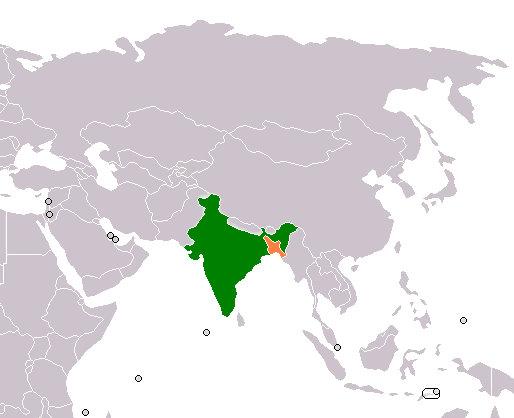


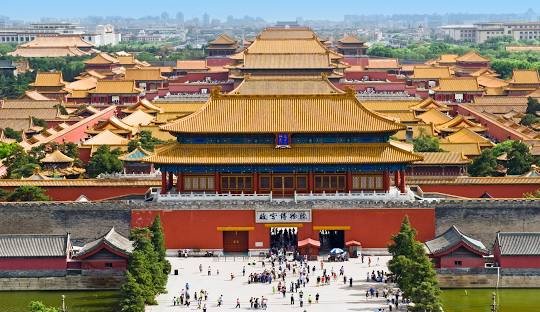
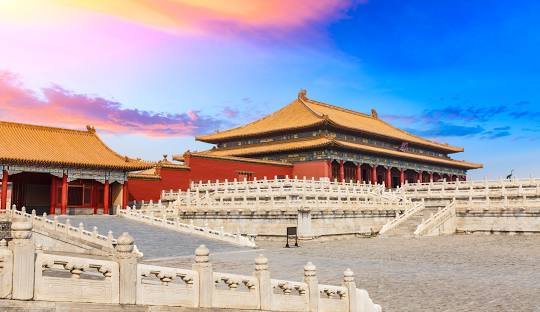



Geographical and Demographic Significance
China, ranked as the world’s third largest country by land area, boasts the highest population globally. Its diverse geography includes the towering Tibetan region, which houses the highest peak on Earth, Mount Everest (8,848m/29,029 ft), as well as the Turpan Depression, the third lowest point on the planet at -154m (-505 ft).
Rich Historical Heritage
China, one of “the Four Ancient Civilizations” alongside Babylonian, Mayan, and Egyptian cultures, has a documented history spanning over 3,000 years. Its vibrant and captivating society represents one of the longest-standing civilizations globally.
Cultural and Linguistic Influence
The Chinese civilization has an illustrious cultural heritage and boasts the origin of the only enduring pictographic writing system. The Chinese language is widely believed to be the most spoken and one of the most complex first languages to learn.
Economic Powerhouse
Having experienced rapid economic growth for the past three decades, China now holds the position as the world’s second-largest economy with a 2016 GDP of 11.4 trillion USD.
Geopolitical Relationships
China shares borders with 14 countries, including Russia, Mongolia, Kazakhstan, Afghanistan, Pakistan, India, Nepal, Bhutan, Myanmar, Thailand, Vietnam, Kyrgyzstan, Tajikistan, and North Korea. These neighboring nations have had significant influence on China, and vice versa.
Diversity in Climate and Currency
China enjoys diverse climate types, ranging from tropical in the south to subarctic in the north. Additionally, the Chinese currency is known as the Renminbi (RMB), which consists of the yuan as its basic unit.

Advantages of Studying MBBS in China:
Rapidly Growing Economy and Infrastructure: China’s booming economy and robust infrastructure provide a conducive environment for education and career growth.
Government-Run Universities: All universities in China are owned and operated by the Chinese Government, ensuring a certain level of quality and consistency in education.
Recognized and Approved by International Bodies: Forty-five top medical universities in China are approved by the Medical Council of India (MCI) and recognized by the World Health Organization (WHO) and the United States Medical Licensing Examination (USMLE).
Comparable Curriculum: The medical program in China is comparable to Indian medical education, providing students with a comprehensive and globally recognized degree.
Valid Internship in India: Internships completed in China are considered valid in India, providing Indian students with more options for practical experience and career opportunities.
Safe Environment for International Students: China is considered one of the safest countries for international students, with a welcoming and secure environment, especially for young women.
Affordable Education: The cost of pursuing an MBBS degree in China is significantly lower compared to private medical colleges in India, with tuition starting from 1.5 lakhs INR.
Language and Cultural Benefits: Students have the opportunity to learn the Chinese language, enhancing their communication skills and potentially increasing their earning potential, particularly in countries where Chinese is widely spoken.
Easy Admission Process: Getting admission to MBBS programs in China is relatively simple and does not require complex entrance examinations.
Eligibility Criteria for MBBS in China:
Documents Required for MBBS in China:
| S.No | University Name | FMGE Total | FMGE Passed | FMGE Pass % |
|---|---|---|---|---|
| 1 | ANHUI MEDICAL UNIVERSITY | 81 | 20 | 24.69% |
| 2 | BEIHUA UNIVERSITY SCHOOL OF MEDICINE | 391 | 68 | 17.39% |
| 3 | CAPITAL MEDICAL UNIVERSITY | 197 | 35 | 17.77% |
| 4 | CHANGCHUN UNIVERSITY OF TRADITIONAL CHINESE MEDICINE | 1 | 0 | 0.00% |
| 5 | CHINA MEDICAL UNIVERSITY | 491 | 100 | 20.37% |
| 6 | CHINA THREE GORGES UNIVERSITY | 2 | 0 | 0.00% |
| 7 | CHONGQING MEDICAL UNIVERSITY | 562 | 107 | 19.04% |
| 8 | DALI UNIVERSITY SCHOOL OF MEDICINE | 388 | 78 | 20.10% |
| 9 | DALIAN MEDICAL UNIVERSITY | 203 | 37 | 18.23% |
| 10 | FUJIAN MEDICAL UNIVERSITY | 29 | 5 | 17.24% |
| 11 | GANNAN MEDICAL UNIVERSITY | 44 | 4 | 9.09% |
| 12 | GUANGXI MEDICAL UNIVERSITY | 415 | 86 | 20.72% |
| 13 | GUANGXI UNIVERSITY OF CHINESE MEDICINE | 9 | 2 | 22.22% |
| 14 | GUANGZHOU MEDICAL UNIVERSITY | 88 | 11 | 12.50% |
| 15 | GUANGZHOU UNIVERSITY OF CHINESE MEDICINE | 1 | 1 | 100.00% |
| 16 | GUILIN MEDICAL UNIVERSITY | 6 | 1 | 16.67% |
| 17 | GUIZHOU MEDICAL UNIVERSITY | 106 | 21 | 19.81% |
| 18 | HAINAN MEDICAL UNIVERSITY | 1 | 0 | 0.00% |
| 19 | HARBIN MEDICAL UNIVERSITY | 211 | 36 | 17.06% |
| 20 | HEBEI MEDICAL UNIVERSITY | 411 | 87 | 21.17% |
| 21 | HEBEI NORTH UNIVERSITY FACULTY OF MEDICINE | 2 | 0 | 0.00% |
| 22 | HENAN MEDICAL UNIVERSITY | 2 | 1 | 50.00% |
| 23 | HUBEI UNIVERSITY OF CHINESE MEDICINE FACULTY OF MEDICINE | 10 | 0 | 0.00% |
| 24 | HUBEI UNIVERSITY OF CHINESE MEDICINE FIRST CLINICAL COLLEGE | 5 | 0 | 0.00% |
| 25 | HUBEI UNIVERSITY OF MEDICINE | 25 | 12 | 48.00% |
| 26 | HUBEI UNIVERSITY OF TRADITIONAL CHINESE MEDICINE | 1 | 0 | 0.00% |
| 27 | INNER MONGOLIA UNIVERSITY FOR THE NATIONALITIES | 2 | 0 | 0.00% |
| 28 | JIAMUSI UNIVERSITY SCHOOL OF MEDICINE | 568 | 69 | 12.15% |
| 29 | JIANGSU UNIVERSITY SCHOOL OF MEDICINE | 158 | 36 | 22.78% |
| 30 | JIANGXI MEDICAL COLLEGE | 35 | 5 | 14.29% |
| 31 | JIANGXI MEDICAL COLLEGE OF NANCHANG UNIVERSITY | 195 | 18 | 9.23% |
| 32 | JIANGXI UNIVERSITY OF TRADITIONAL CHINESE MEDICINE | 554 | 162 | 29.24% |
| 33 | JIAXING UNIVERSITY COLLEGE OF MEDICINE | 1 | 0 | 0.00% |
| 34 | JILIN MEDICAL UNIVERSITY | 151 | 22 | 14.57% |
| 35 | JINAN UNIVERSITY SCHOOL OF MEDICINE | 153 | 37 | 24.18% |
| 36 | JINGGANGSHAN UNIVERSITY MEDICAL SCHOOL | 90 | 21 | 23.33% |
| 37 | JINZHOU MEDICAL UNIVERSITY | 329 | 72 | 21.88% |
| 38 | JIUJIANG UNIVERSITY MEDICAL COLLEGE | 24 | 4 | 16.67% |
| 39 | KUNMING MEDICAL UNIVERSITY | 263 | 47 | 17.87% |
| 40 | LIAONING MEDICAL UNIVERSITY | 6 | 0 | 0.00% |
| 41 | LUZHOU MEDICAL COLLEGE | 2 | 0 | 0.00% |
| 42 | MEDICAL COLLEGE OF CHINA THREE GORGES UNIVERSITY | 203 | 34 | 16.75% |
| 43 | MEDICAL COLLEGE OF WUHAN UNIVERSITY OF SCIENCE AND TECHNOLOGY | 3 | 0 | 0.00% |
| 44 | NANJING MEDICAL UNIVERSITY | 130 | 30 | 23.08% |
| 45 | NANTONG MEDICAL COLLEGE | 119 | 17 | 14.29% |
| 46 | NANTONG UNIVERSITY MEDICAL SCHOOL | 186 | 32 | 17.20% |
| 47 | NINGBO UNIVERSITY MEDICAL SCHOOL | 240 | 45 | 18.75% |
| 48 | NINGXIA MEDICAL UNIVERSITY | 200 | 36 | 18.00% |
| 49 | NORMAN BETHUNE COLLEGE OF MEDICINE JILIN UNIVERSITY | 109 | 30 | 27.52% |
| 50 | NORMAN BETHUNE HEALTH SCIENCE CENTER OF JILIN UNIVERSITY | 106 | 27 | 25.47% |
| 51 | NORMAN BETHUNE UNIVERSITY OF MEDICAL SCIENCES | 15 | 1 | 6.67% |
| 52 | NORTH CHINA UNIVERSITY OF SCIENCE AND TECHNOLOGY COLLEGE OF MEDICINE | 24 | 2 | 8.33% |
| 53 | NORTH SICHUAN MEDICAL COLLEGE | 218 | 60 | 27.52% |
| 54 | QINGDAO UNIVERSITY COLLEGE OF MEDICAL SCIENCE | 237 | 56 | 23.63% |
| 55 | QIQIHAR MEDICAL UNIVERSITY | 13 | 3 | 23.08% |
| 56 | SHANDONG FIRST MEDICAL UNIVERSITY | 250 | 38 | 15.20% |
| 57 | SHANDONG UNIVERSITY CHEELOO COLLEGE OF MEDICINE | 57 | 11 | 19.30% |
| 58 | SHANTOU UNIVERSITY MEDICAL COLLEGE | 1 | 0 | 0.00% |
| 59 | SHENYANG MEDICAL COLLEGE | 8 | 0 | 0.00% |
| 60 | SHIHEZI UNIVERSITY SCHOOL OF MEDICINE | 114 | 31 | 27.19% |
| 61 | SICHUAN UNIVERSITY | 1 | 0 | 0.00% |
| 62 | SOOCHOW UNIVERSITY MEDICAL COLLEGE | 384 | 64 | 16.67% |
| 63 | SOUTHEAST UNIVERSITY MEDICAL COLLEGE | 195 | 36 | 18.46% |
| 64 | SOUTHERN MEDICAL UNIVERSITY | 428 | 77 | 17.99% |
| 65 | SOUTHWEST MEDICAL UNIVERSITY | 232 | 52 | 22.41% |
| 66 | ST. TEREZA MEDICAL UNIVERSITY | 1 | 0 | 0.00% |
| 67 | SUZHOU MEDICAL COLLEGE | 6 | 0 | 0.00% |
| 68 | TAISHAN MEDICAL UNIVERSITY | 14 | 0 | 0.00% |
| 69 | THREE GORGES UNIVERSITY COLLEGE OF MEDICAL SCIENCE | 173 | 36 | 20.81% |
| 70 | TIANJIN MEDICAL UNIVERSITY CLINICAL MEDICAL COLLEGE | 165 | 25 | 15.15% |
| 71 | TIANJIN MEDICAL UNIVERSITY SCHOOL OF BASIC MEDICAL SCIENCES | 218 | 53 | 24.31% |
| 72 | TONGJI MEDICAL COLLEGE OF HUAZHONG UNIVERSITY OF SCIENCE & TECHNOLOGY | 27 | 4 | 14.81% |
| 73 | TONGJI UNIVERSITY SCHOOL OF MEDICINE | 19 | 3 | 15.79% |
| 74 | WEIFANG MEDICAL UNIVERSITY | 507 | 66 | 13.02% |
| 75 | WENZHOU MEDICAL UNIVERSITY | 149 | 48 | 32.21% |
| 76 | WEST CHINA COLLEGE OF MEDICINE SICHUAN UNIVERSITY | 243 | 50 | 20.58 |
| University Name | Tuition Fee/Year (RMB) | Tuition Fee/Year (INR) | Hostel Fee/Year (RMB) | Hostel Fee/Year (INR) |
|---|---|---|---|---|
| Capital Medical University | 50000 | Rs. 5.50 Lakhs | 11000 | Rs. 1.21 Lakhs |
| Nanjing Medical University | 34000 | Rs. 3.74 Lakhs | 6000 | Rs. 66,000 |
| Southern Medical University | 40000 | Rs. 4.40 Lakhs | 6000 | Rs. 66,000 |
| Tianjin Medical University | 48000 | Rs. 5.28 Lakhs | 11500 | Rs. 1.26 Lakhs |
| China Medical University | 40000 | Rs. 4.40 Lakhs | 11500 | -Rs. 1.26 Lakhs |
| Harbin Medical University | 30000 | Rs. 3.30 Lakhs | 5400 | Rs. 59,400 |
| Chongqing Medical University | 30000 | Rs. 3.30 Lakhs | 4800 | Rs. 52,800 |
| Dalian Medical University | 42000 | Rs. 4.62 Lakhs | 11000 | Rs. 1.21 Lakhs |
| Hebei Medical University | 36000 | Rs. 3.96 Lakhs | 5000 | Rs. 55,000 |
| Wenzhou Medical University | 30000 | Rs. 3.30 Lakhs | 4000 | Rs. 44,000 |
| Guangzhou Medical University | 30000 | Rs. 3.30 Lakhs | 6000 | Rs. 66,000 |
| Anhui Medical University | 32000 | Rs. 3.52 Lakhs | 4000 | Rs. 44,000 |
| Fujian Medical University | 35000 | Rs. 3.85 Lakhs | 4000 | Rs. 44,000 |
| Guangxi Medical University | 35000 | Rs. 3.85 Lakhs | 6000 | Rs. 66,000 |
| Guangzhou University of Chinese Medicine | 20000 | Rs. 2.20 Lakhs | 4000 | Rs. 44,000 |
| Zhejiang Chinese Medical University | 25000 | Rs. 2.75 Lakhs | 6500 | Rs. 71,500 |
| Xuzhou Medical College | 33000 | Rs. 3.63 Lakhs | 4600 | Rs. 50,600 |
| Shanxi Medical University | 15000 | Rs. 1.65 Lakhs | 3200 | Rs. 35,200 |
| Ningxia Medical University | 34000 | Rs. 3.74 Lakhs | 5000 | Rs. 55,000 |
| Tianjin University of Traditional Chinese Medicine | 25000 | Rs. 2.75 Lakhs | 5000 | Rs. 55,000 |
| S.No. | First Semester | 2nd Semester |
|---|---|---|
| 1 | Cell Biology | Histology |
| 2 | Medical Chemistry | Physical |
| 3 | Chinese Introduction | Human Anatomy |
| 4 | Physical | Chinese Art |
| 5 | Chinese Culture |
| S.No. | 3rd Semester | 4th Semester |
|---|---|---|
| 1 | Medical Genetics | Parasitology |
| 2 | Embryology | Biochemistry |
| 3 | Human Anatomy | Human Anatomy |
| 4 | Chinese History | Chinese |
| S.No. | 5th Semester | 6th Semester |
|---|---|---|
| 1 | Microbiology | Hygienics |
| 2 | Hygienic Statistic | Immunology |
| 3 | Physiology | Physiology |
| 4 | Medical Chinese | Pathophysiology |
| 5 | Medical Chinese |
| S.No. | 7th Semester | 8th Semester |
|---|---|---|
| 1 | Medical Chinese | Neurology |
| 2 | Epidemiology | Medical Chinese |
| 3 | Pathology | Forensic Pathology |
| 4 | Diagnosis | TCM |
| 5 | Pharmacology | Radio Diagnosis |
| 6 | Psychiatry | Dentistry |
| 7 | Communicable Disease |
| S.No. | 9th Semester | 10th Semester |
|---|---|---|
| 1 | Medicine | Medicine |
| 2 | Gynecology | Obstetrics |
| 3 | Surgery | Surgery |
| 4 | ENT | Pediatrics |
| 5 | Dermatology | |
| 6 | Ophthalmology |
The 6th year involves Clinical Internship.
In November 2021, the National Medical Commission (NMC) released the “Foreign Medical Graduate Licentiate Regulations, 2021,” which apply to foreign medical graduates seeking permanent registration in India, not exclusive to China. These regulations outline specific criteria:
Course Duration: The General Medicine course in China spans 5 years, the same for local and foreign students, meeting the requirement of a 54-month duration.
Internship: NMC stipulates a 12-month internship in addition to the 5-year course. The medical universities provide clerkship/clinical rotations for 12 months or more.
Medium of Instruction: Chinese universities teach in English. However, proficiency in the Local language is essential for patient interactions during hospital visits and local communication.
Local Government’s Licensing exam must be cleared.
As of Now, very few countries meet the FMGL Regulations. If you study in China, remember:
Complete your foreign medical graduation course within ten years from enrollment.
Degrees from universities with a bilingual pattern may not be valid in India.
To ensure the validity of your degree in India, clear the NEET exam before admission. MBBS abroad without NEET may not allow you to sit for NEXT.
Clear the local Government’s licensing exam.
This is a popular choice among Indian students, with classes commencing in September.
Most MBBS programs typically commence during the Fall semester, with application deadlines falling between the months of February and September. However, some MBBS programs may offer a Spring intake, starting in March, and have corresponding application deadlines in December and January.
Securing an education loan for pursuing MBBS in China is indeed possible, although it might require some effort as not all banks readily offer loans for studying abroad.
Loan Amount and Application Process
Banks typically offer loans of up to ₹7 or 7.5 lakhs without the need for any collateral, whereas for higher loan amounts, collateral might be required. During the loan application process, banks will scrutinize parental documents alongside essential details such as the admission letter, which can be facilitated with the support of Rich Global Edu.
Preferred Banks and Interest Rates
To initiate the loan process, it is advisable to approach Government Banks or Public Sector Undertaking (PSU) banks such as Canara Bank, State Bank of India, Allahabad Bank, or State Bank of Mysore. It is recommended to first approach the bank where you hold an existing account. The interest rates are typically in the range of 10-13% for loans exceeding INR 4 lakh and 7-9% for loans below INR 4 lakh, with compound interest calculations being employed by the bank.
Important Considerations
The bank disburses the loan on a yearly basis, and failure in the initial year might affect subsequent loan disbursements.
The process of securing an education loan might require applications at multiple banks before obtaining approval.
It is crucial to gather detailed information from the bank regarding the repayment schedule and the total interest amount to be paid.
Documents Required for Education Loan
Admission letter from the university
Completed loan application form
Passport-sized photographs
Proof of identity (such as Aadhar Card, PAN Card, or Passport)
Proof of residence (such as Aadhar Card, Voter ID, or Passport)
Academic records of the student (mark sheets, certificates, etc.)
Admission acceptance letter and fee structure from the university
Proof of admission-related expenses (hostel fees, tuition fees, etc.)
Proof of parents’ income and employment
Income tax returns of the co-applicant or guarantor, if applicable
Bank account statement of the last six months of the co-applicant or guarantor
Collateral documents, if applicable
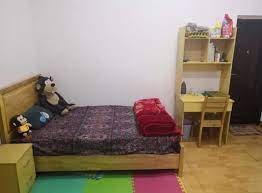
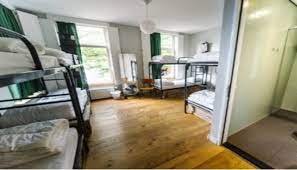

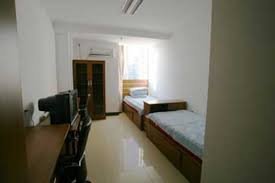
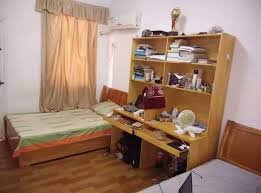

Accommodation Arrangements for Indian Students
Indian students are typically provided accommodation within the university’s hostels for the entire duration of their MBBS program in China.
Initially, it is mandatory for new students to reside in the university’s hostels for at least one year, primarily due to their limited knowledge of the local language for effective communication with the residents.
After the first year, students have the option to either continue residing in the university’s hostels or choose to rent a flat or apartment with their peers, should they wish to explore alternative accommodation options.
To ensure a comfortable living environment, separate hostel facilities are designated for Indian boys and girls, often allocated within distinct blocks or wings of the same hostel building.
Safety and Security Measures
Hostels, whether managed by the university or private entities, are equipped with comprehensive safety features, including CCTV surveillance systems at critical locations and fire alarms in every room, prioritizing the safety and security of international students.
Entry and exit times from the hostel premises are regulated, with set times of 6:00 AM and 8:00 PM respectively. A dedicated security guard is present to monitor the movement of students and visitors within the hostel premises.
Facilities and Amenities
Each hostel floor is equipped with a communal kitchen, enabling Indian students to prepare their meals as per their preferences.
Furthermore, reading halls, sports facilities, and laundry services are readily accessible within both government and private hostels.
Rooms are furnished with essential amenities, including study tables, chairs, lamps, beds, bed sheets, pillows, and wardrobes. The hostel administration facilitates furniture repairs in case of damages and provides weekly exchanges for bedding items.
To ensure comfort during the colder months, rooms are equipped with radiators for efficient heating.
Additional Amenities and Services
Essential utilities such as electricity, hot and cold water, and cooking gas are typically included in the hostel fee for government and private hostels in Bangladesh. However, when opting for private accommodation, additional charges may apply based on usage.
Students have the flexibility to choose between 2/3/4 seater rooms based on availability and can request room changes by submitting a formal application to the hostel administration.
Hostel dining facilities, typically mandatory for first-year Indian students, offer the convenience of an Indian mess serving breakfast, lunch, and dinner at a monthly cost ranging between USD 500 to 1000. From the second year onwards, students have the option to continue availing the Indian mess services on a paid basis or utilize the hostel kitchen facilities for self-cooking purposes.
Countries for MBBS Abroad
Top Universities for MBBS
FAQs
MBBS in Moldova
MBBS in Nepal
MBBS in USA
© 2024 Rich Global Edu